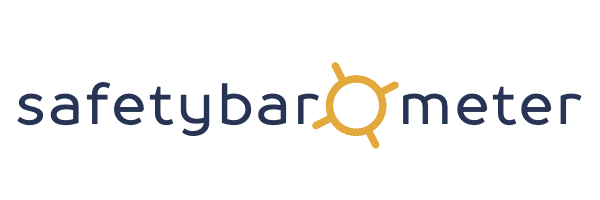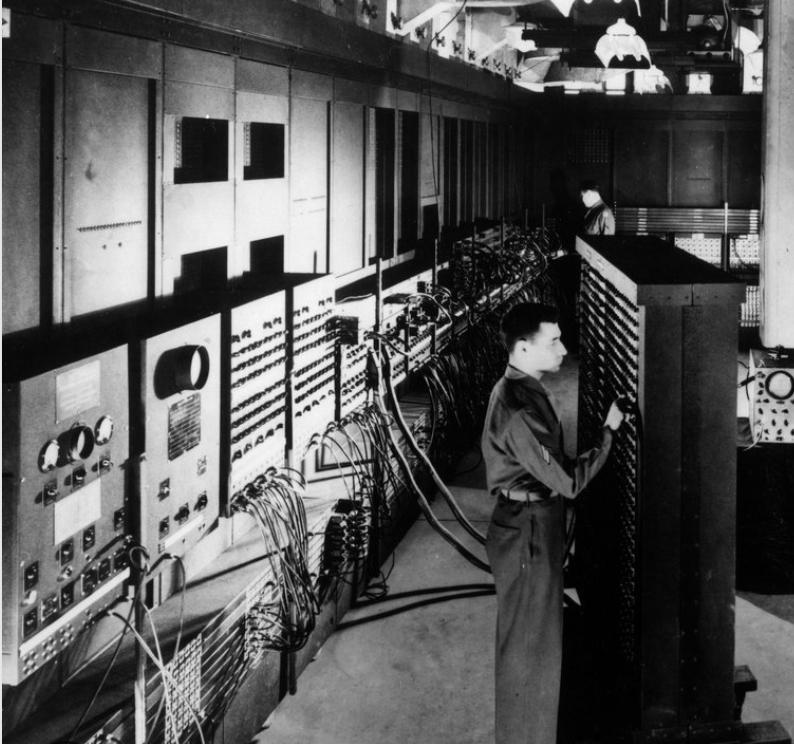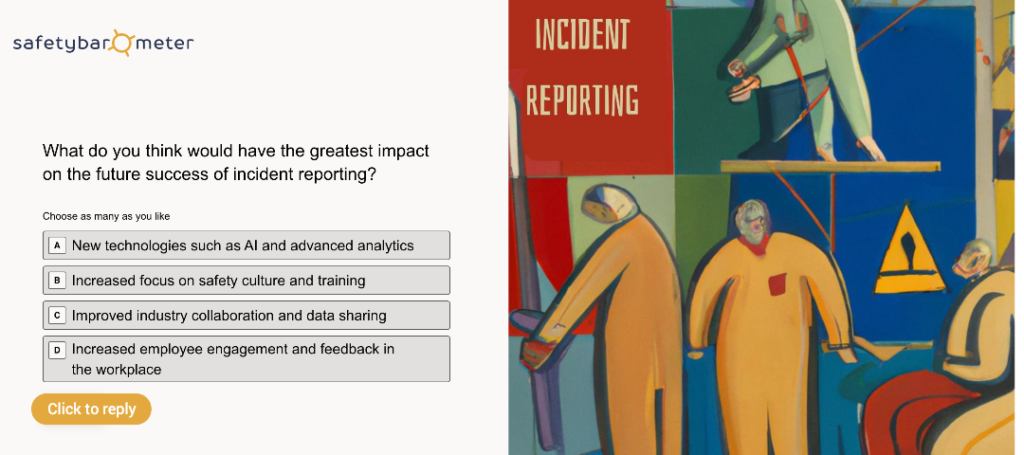
Unlocking the power of data analytics in industrial incident reporting
Today in Safetybarometer, we explore how the use of data analytics can improve incident reporting in the manufacturing sector. What tools allow to improve not only the accuracy, but also the predictive capabilities of safety protocols? And how can streamlining reporting processes lead to a safer, more responsive manufacturing environment?
Do you know Herbert William Heinrich?
This 1930s visionary was a pioneer in the world of incident analysis. With his “domain theory” he introduced the idea that human error is often at the root of workplace accidents. These insights of Heinrich formed the basis for modern safety practices. Imagine how he would respond to today’s safety innovations! His fundamental theories have now evolved in an era where advanced data analytics and AI are enabling predictive approaches to safety in the manufacturing sector. Heinrich’s legacy lives on in these technological advances that help us not only analyze incidents but also proactively prevent them.


The incident room
Before the digital turnaround, the world of incident reporting in manufacturing was a completely different story. Imagine a safety manager, the keeper of safety, with his desk lamp as his faithful companion in a room full of filing cabinets called the incident room. His day began by going through handwritten reports, his role was to analyze every detail in order to discover patterns. Reporting was focused on immediate damage control rather than prevention. This was an era when information traveled slowly and decisions were made primarily based on experience and instinct, rather than on in-depth data analysis.
The start of digital incident reporting
It all began in the late 20th century, when computers made their appearance in factory halls. Interestingly, the first step was taken with basic spreadsheets; a simple but groundbreaking change.
One of the first examples of this digital transition was the use of database software, previously reserved for financial and customer data, for security management. This innovation made it possible to log incidents in a system that was instantly accessible to everyone in the company. No more papers lying around, but a clear, instantly updated record of every event.

A fun fact about this is that these early systems were often customized and dependent on the creativity and technical skills of the internal IT teams. Each company had its unique system, tailored to its specific needs and processes.
However, the true game-changer came with the rise of the Internet and cloud technologies. This enabled companies to not only store data locally, but also share it and make it accessible to multiple locations worldwide. This was the beginning of the era of “connected security,” where incidents could be reported and analyzed in real time, regardless of geographic location.
The introduction of AI and machine learning was the next big step. These technologies enabled companies to go beyond simply recording incidents. They could now identify patterns and trends, allowing them to predict potential risks and take proactive measures. In fact, the role of security managers evolved from reactive to strategic, using data-driven insights to transform the security culture within their organizations.
Let’s look at the tools and techniques used in practice and how they are transforming the industry and consequently reducing incidents.
Modern Analytical Tools and Applications
IoT Sensors and Data Collection
A core aspect of modern data analytics is the use of Internet of Things (IoT) sensors. These sensors collect real-time data on everything from machine performance to environmental conditions. This data forms the basis for further analysis.
Predictive Analytics Software
This software uses historical data to predict future incidents. It helps identify potential risks before they occur, enabling proactive measures.

Machine Learning Algorithms
These algorithms can recognize patterns in large data sets that are difficult for humans to detect. They are used to identify hidden risk factors and optimize security protocols.
Practical Examples
The table below provides an overview of how different industry sectors are deploying specific technologies for safety. These tools range from sensors and analytics software in the chemical industry to AI algorithms in the construction industry, each aimed at improving safety by detecting, analyzing and preventing incidents.
| Sector | Application | Tool Explanation | Use of Technology |
|---|---|---|---|
| Chemical Industry | Incident Detection and Analysis | Sensors and analytics software track chemical reactions, alerting to anomalies. | Real-time monitoring to detect and analyze safety incidents. |
| Mining Industry | Accident Prediction | Software analyzes historical accident data to predict future risks. | Forecasting mining accidents to proactively enhance safety measures. |
| Logistics & Transportation | Transport Safety Monitoring | GPS and sensor data are analyzed to ensure safe transport operations. | Enhancing transport safety through continuous monitoring and data analysis. |
| Manufacturing | Equipment Failure Prediction | Machine learning predicts when machines are likely to fail, preventing accidents. | Preventing equipment-related accidents through predictive maintenance. |
| Energy Sector | Energy System Safety Analysis | Data from energy control systems is analyzed to identify potential safety issues. | Mitigating safety risks by analyzing energy system operations. |
| Construction | Construction Site Hazard Analysis | AI algorithms analyze construction plans and ongoing operations for hazards. | Preventing incidents by identifying hazards at construction sites. |
Predicting the Future with AI in incident reporting
The next big breakthrough in incident reporting is the use of AI for predictive analytics. Companies are experimenting with models that predict incidents before they happen, based on subtle patterns in collected data. An intriguing fact is that some of these systems are already able to identify potential incidents with an accuracy of more than 80%, representing a major leap forward in preventive safety management.
New Standards in Reporting
The impact of new legislation such as the GDPR has led to a shift in how companies report incidents, with a greater emphasis on data privacy and security. Interestingly, this has prompted some companies to move to systems that offer anonymized data analytics, increasing security without sacrificing privacy.
Striking the Balance: Cost versus Security Gains
A recent study showed that investment in advanced incident reporting systems pays for itself within two years through the reduction in incidents and associated costs. Companies that invest in these technologies not only see an improvement in security performance, but also experience a decrease in insurance and compensation costs
Tackling Technological Challenges
One of the biggest challenges in implementing advanced incident reporting systems is integration with existing infrastructure. Many companies face the task of updating or replacing outdated systems, which can be both a technical and financial challenge. One notable point is that some companies are moving to modular upgrades, which allow them to gradually integrate new technologies without disrupting existing operations.
